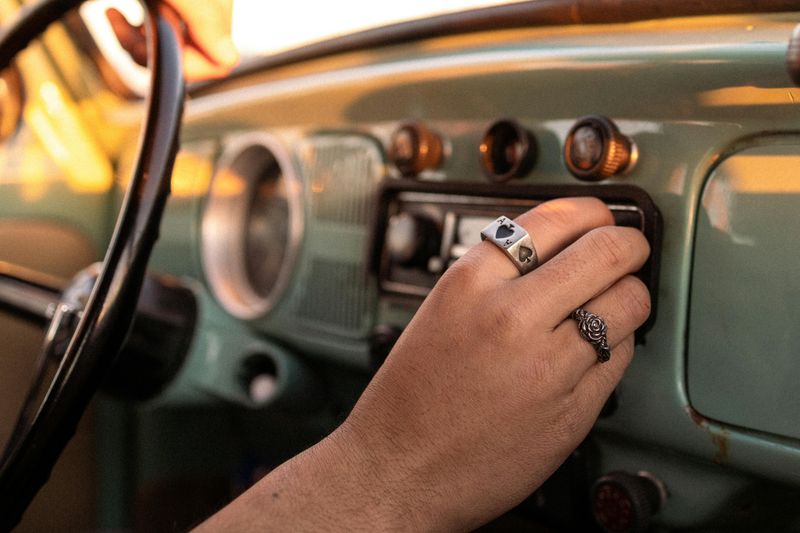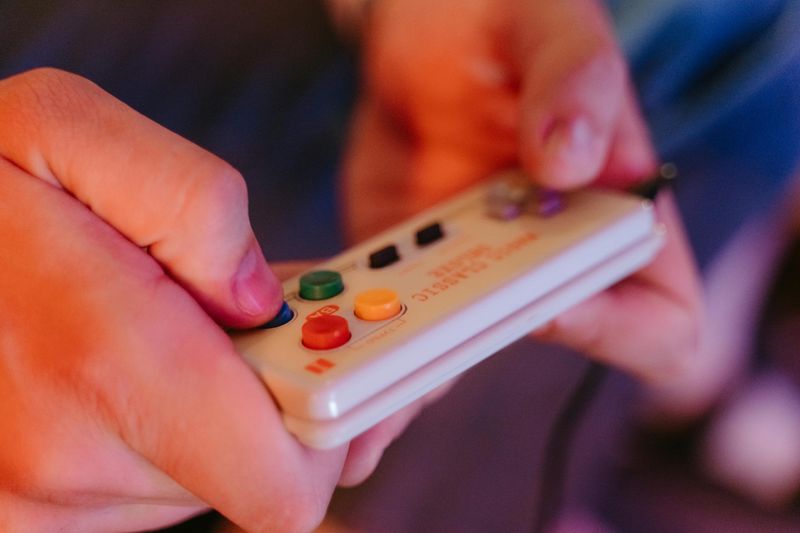Growing up in the 80s and 90s shaped us in ways we might not even realize. Those formative years when technology was evolving, music was transforming, and life seemed simpler left lasting impressions on our daily behaviors. Here are nine habits you probably still have if you grew up during this golden era of neon colors, cassette tapes, and dial-up internet.
1. Blowing on Electronics When They Don’t Work

The sacred ritual of Nintendo cartridge troubleshooting lives on in our muscle memory. When any electronic device acts up today, our first instinct is still to blow on it, despite knowing better.
Modern smartphones glitching? A quick puff of air might escape your lips before logic kicks in. This habit stems from those frustrating childhood moments when Super Mario refused to load, and somehow, our breath seemed magical.
The science never supported this fix—in fact, moisture from breath could damage electronics—but the placebo effect was real. Now we unconsciously apply this technique to credit card readers, USB drives, and any technology that dares malfunction.
2. Saving Everything ‘Just in Case’

Remember when computer storage was precious? That 1.44MB floppy disk taught us to be digital hoarders. Now, despite having terabytes of cloud storage, we still save multiple versions of the same file.
This caution extends beyond digital life. Plastic containers from takeout, gift bags slightly used once, and empty Amazon boxes all find refuge in our homes. The scarcity mindset formed when resources weren’t abundant still governs our decisions.
We hit save compulsively while working, even though auto-save features have existed for years. The fear of losing work—burned into our psyche from that time the computer crashed before saving our book report—never truly disappears.
3. Writing Down Phone Numbers

Despite cloud syncing, some of us still jot down phone numbers. Old habits from memorizing landlines and dialing payphones die hard.
The fear of technology failing us runs deep. What if your phone dies and you need to call your partner? What if you lose access to your digital contacts? The physical backup provides security that digital solutions can’t replace.
Beyond practicality, there’s something personal about handwritten numbers. They carry emotional weight—like that crumpled paper with your first crush’s number that you practiced dialing repeatedly before getting the courage to call.
4. Turning Down the Radio to Concentrate While Driving

Ever find yourself lowering the volume just to find an address? That’s your brain kicking into focus mode—a habit leftover from the days when driving felt like solving a puzzle in motion.
The science actually supports this behavior. Our brains process visual and auditory information in overlapping regions, so reducing sound input helps focus visual attention. But our generation does this almost religiously compared to younger drivers.
Parents who taught us to drive reinforced this habit, likely passing down wisdom from their own learning experiences. Now we perpetuate the cycle, instinctively creating silence when concentration matters most—a quirky behavioral time capsule from our early driving days.
5. Pressing Buttons Too Hard

If you’re jabbing at your phone like it owes you money, blame your arcade roots. Old-school controllers trained us to press hard, and those habits die hard.
Modern touchscreens need only the lightest tap, yet we pound away as if still playing Street Fighter II. Phone screens, ATMs, elevator buttons—all receive our forceful jabs while younger generations effortlessly glide their fingers across surfaces.
The muscle memory runs deep, especially during moments of frustration when devices don’t respond immediately. Our solution? Press harder! This habit extends to remote controls too, where we’ll mash buttons repeatedly or remove batteries for a “reset” when things don’t work.
6. Extensive Mixtape Mentality

Creating the perfect playlist remains serious business for 80s and 90s kids. We approach streaming services with the same careful curation once reserved for precious cassette tapes, considering song order, flow, and emotional journey.
Hours disappear as we craft the ideal workout mix or road trip soundtrack, despite algorithms offering instant playlists. The limited space of a 90-minute cassette taught us to be selective and intentional with music choices.
Modern playlists rarely reach their potential without our intervention. We still believe the perfect combination of songs can change someone’s mood or even their life—a lesson learned when creating mixtapes for crushes. The strategic placement of that one meaningful song still matters tremendously.
7. Be Kind, Rewind Mentality

Late fees from Blockbuster trained an entire generation to reset things to their starting position. We still rewind digital movies to the beginning after watching, even though streaming services automatically reset.
This considerate behavior extends beyond entertainment. We return shopping carts, reset gym equipment, and leave things as we found them. The habit formed from those Friday night video rental experiences where forgetting to rewind meant embarrassment and extra charges.
The anxiety of returning something in improper condition remains powerful. Modern streaming platforms removed the technical need for rewinding, but the psychological impulse persists. Next time you find yourself “rewinding” a Netflix show or resetting a digital book to page one, thank your video store upbringing.
8. Waiting Through Commercials

Streaming services offer commercial-free viewing, yet many of us still sit through ads without reaching for the skip button. Those years of bathroom breaks timed perfectly between TV segments conditioned us to accept these marketing interruptions.
We developed patience watching Saturday morning cartoons, knowing commercials were non-negotiable parts of the experience. Now, even with premium subscriptions, we sometimes zone out during skippable YouTube ads or Hulu commercials rather than taking action.
The younger generation finds this baffling—why endure what you can skip? But our brains were wired differently. Commercials meant snack breaks or quick discussions about the show. This passive acceptance of advertising interruptions remains one of our generation’s most peculiar technological blind spots.
9. Physically Tilting During Video Games

Watch any 80s or 90s kid play a racing game and witness the full-body experience. We lean into turns, physically dodge obstacles, and sometimes stand up during intense gaming moments—behaviors formed when primitive controllers offered limited control.
Modern motion-sensing technology finally caught up to what we were trying to accomplish all along. The Wii seemed designed specifically for our generation, validating decades of instinctive physical gaming movements that never actually affected gameplay.
This habit transcends gaming contexts. We lean forward during challenging work tasks, physically dodge while watching action movies, and tilt our bodies when describing directions. Our brains formed these connections early, creating a mind-body link between virtual challenges and physical responses that younger generations developed differently.

Comments
Loading…